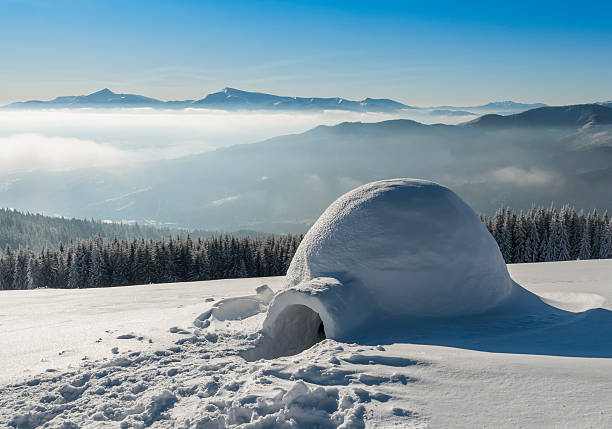"Intricacies of Ice Hotels: Arctic Accommodations Redefining Travel Experience"
Introduction: Immersive and unique, ice hotels have transformed the concept of accommodation, offering a singular blend of art, adventure, and a chilly night's sleep. This audacious travel trend is redefining winter tourism, emerging as a fascinating counterpoint to traditional luxury retreats.

A Brief History of Ice Hotels:
The first ice hotel, aptly named ICEHOTEL, was born in 1989 in Jukkasjärvi, a small village in Northern Sweden. It started as a 60 square meter igloo built to exhibit art and has since evolved into a monumental structure, sculpted afresh each winter. The concept has garnered international attention, inspiring the creation of similar establishments in Norway, Canada, and Romania.
Ice Hotels: A Unique Travel Trend
Ice hotels have become an increasingly popular travel trend in recent years, offering guests the opportunity to experience a night in a room made entirely of ice and snow. These unique establishments are typically open during the colder months, from late December to early March, and feature everything from ice sculptures to ice bars and even ice chapels.
Advantages & Challenges of Ice Hotel Stays
Staying in an ice hotel offers an unparalleled travel experience. Guests can indulge in a range of winter activities like dog sledding, ice sculpting, and Northern Lights excursions. However, the experience isn’t without its challenges. The sub-zero temperatures require guests to sleep in thermal sleeping bags, and the lack of traditional amenities can be daunting for some.
Impact on Travel Culture
Ice hotels have undoubtedly had a significant impact on travel culture, pushing the boundaries of what is considered ‘comfort’ in accommodation. They have introduced travelers to a whole new world of possibilities, making a statement about embracing harsh environments and finding beauty in the temporary.
Unveiling Arctic Adventures: Tips & Trivia
- Ice hotels are rebuilt each year, allowing for new designs and themes.
- Despite being made of ice, the hotels maintain a constant temperature between -5°C to -8°C.
- Guests usually spend one night in the ice room and then shift to a ‘warm room’ for the remaining stay.
- Ice hotels often feature intricate light installations, enhancing the ethereal beauty of the icy architecture.
- The ice used in constructing these hotels is often sourced from nearby rivers.
In conclusion, ice hotels exemplify the spirit of modern travel – seeking out unique, immersive experiences that push the boundaries of comfort and convention. These frosty accommodations provide a unique perspective on life in the Arctic, ultimately enriching our understanding and appreciation of this extreme environment. As more travelers seek offbeat experiences, ice hotels continue to carve out a niche in the travel industry, offering an unforgettable blend of art, adventure, and sub-zero luxury.




